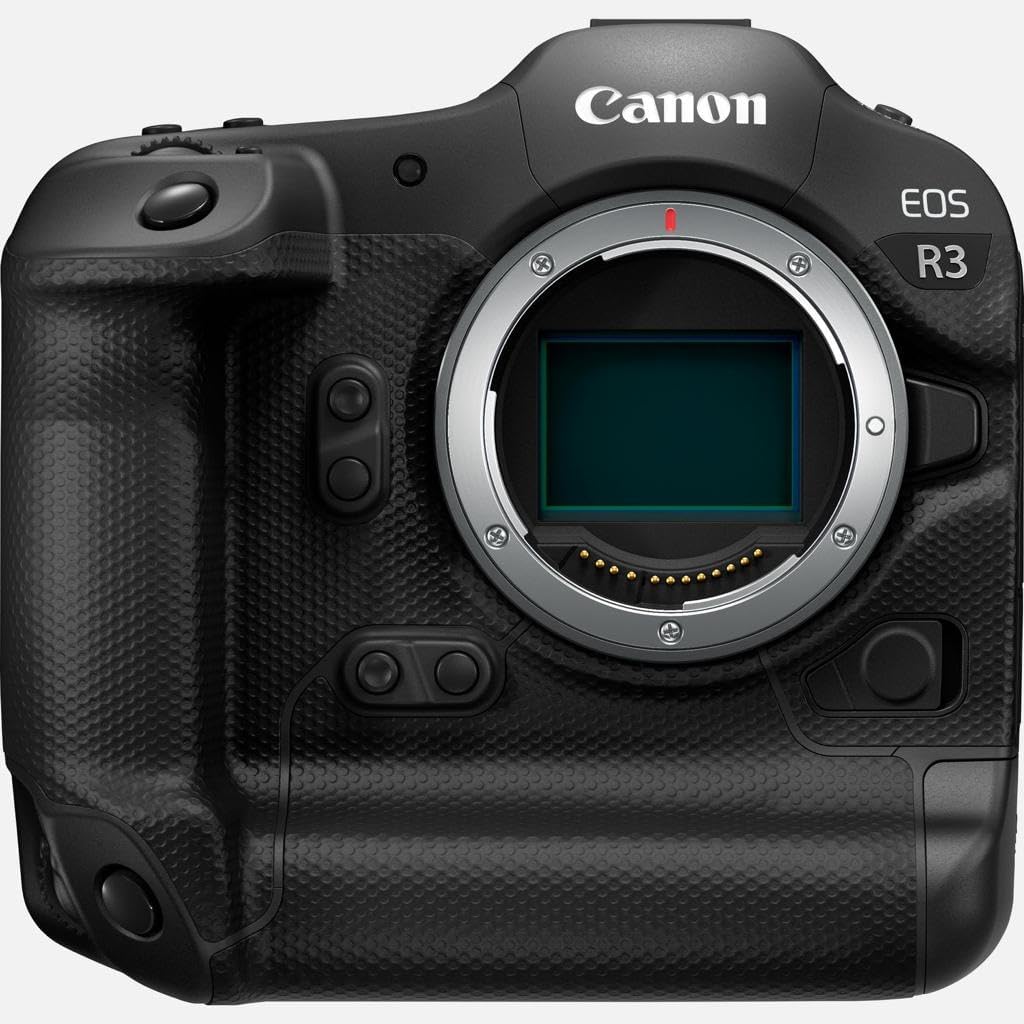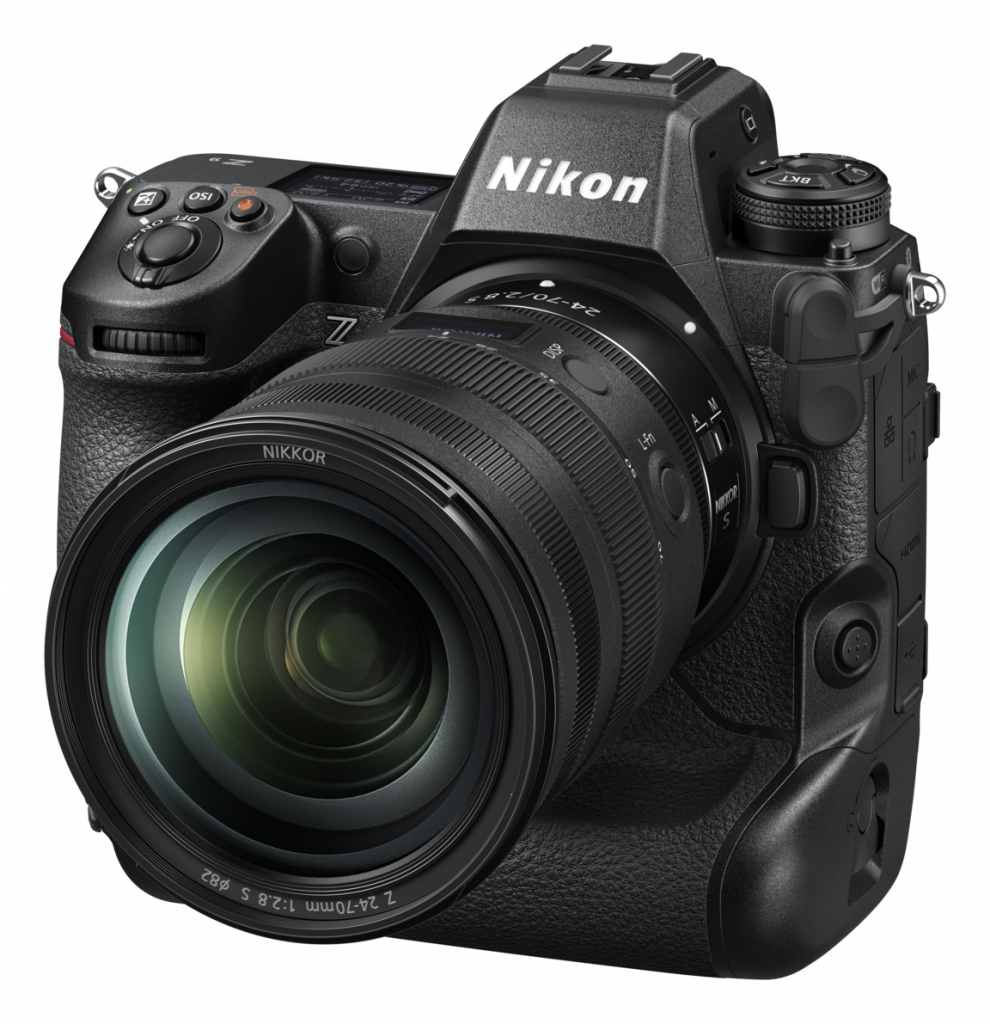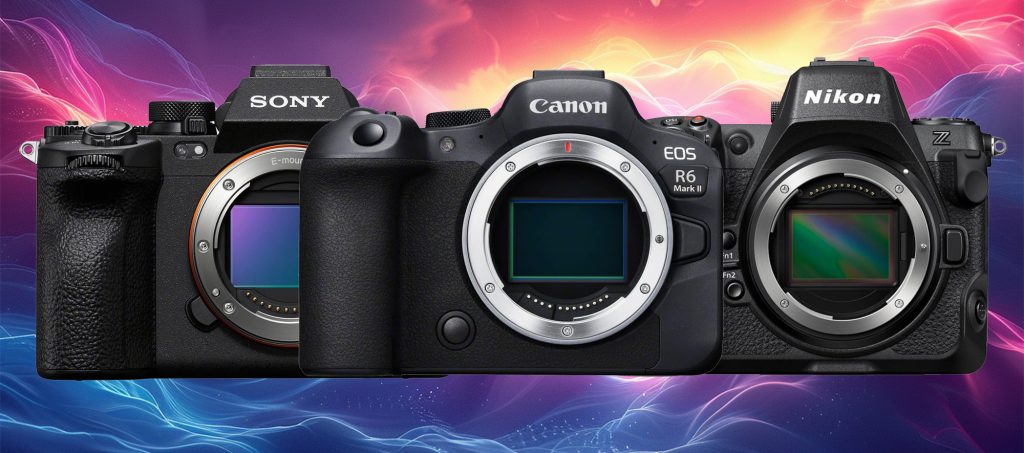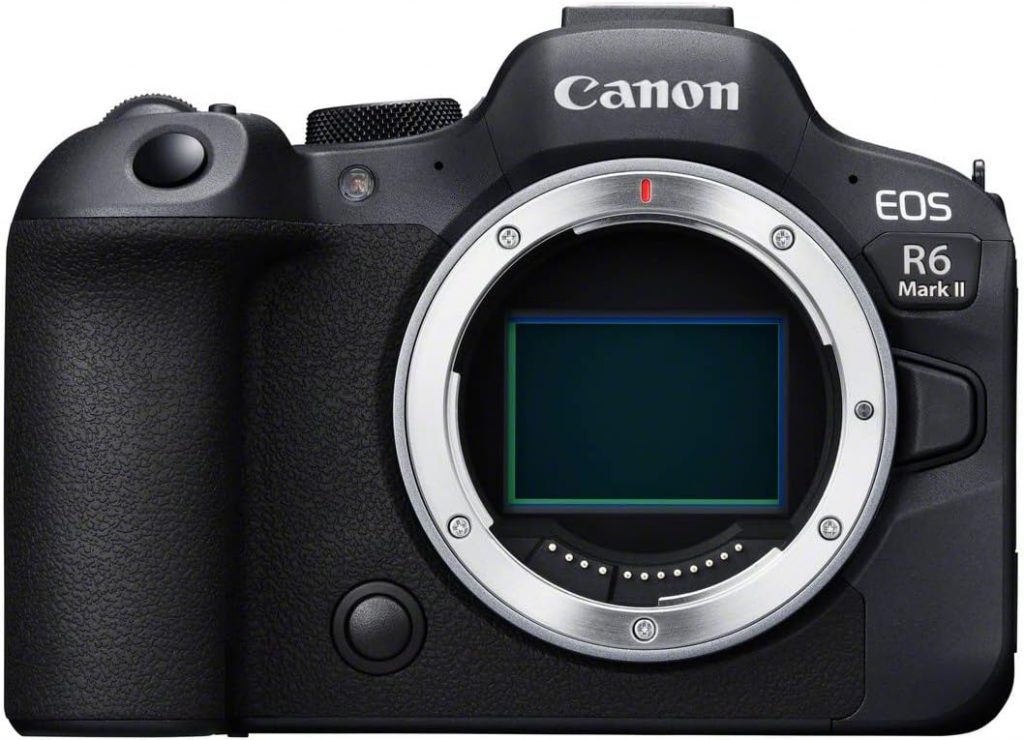WHICH BRAND HAS THE BEST CAMERAS? THE TRUTH IS SHOCKINGLY SIMPLE...
Which is the best camera for photography in 2025? Canon is arguably the most famous and prolific camera brand around, with a vast history in the game. But does that mean they create the best cameras? Nikon and Sony may have something to say about that…

Let me start with a bit of anti-clickbait. Virtually any camera in 2025 is more than you need. The truth to which is the best camera for photography is a lot more nuanced, and I’ll get into the details shortly. But if you wanted the short answer, that’s my opinion.
That said, Canon have a history of creating industry-leading cameras and lenses, especially the read band L series. Right up until the death of the DSLR, Canon had a very strong grip on the photography market, with cameras such as the full-frame 5D IV, 1D X Mark III dominating many professionally photographer’s daily kit bags.
Nikon are an equally storied brand with a history of excellence and innovation. The lenses are equally as revered and they have a lot more hits tan misses if you weight the balance sheet.
Sony are newer to the game, buying up Minolta in the 2006. Their DSLRs weren’t mush to speak of (though I loved my A300), but the SLTs (Single-Lens Translucent) models, such as the A77 and A99, set the seeds for innovation that still flourish today.
While Canon and Nikon were slow to adapt to the new mirrorless trend and had a period of playing catchup, Sony moved over quickly and ruled to roost from the off. In 2025, this slow start is largely a blip on the radar, with many excellent new mirrorless Canon and Nikon cameras on the market. If you’ve decided you wanted one of the legacy brands you will be very happy!
Table of Contents

WHY DO MANY PEOPLE THINK CANON IS THE BEST CAMERA BRAND?
Now we’re getting into the thick of it! This is just my opinion, but Canon’s penetration into the beginner and entry-level market has led to most people answering the question, ‘what is the best camera brand’ with ‘Canon, just like mine’. Success breeds success.
The thing is, that’s a fair statement. Canon has previously had a huge range of models on the market, especially entry-level aimed at beginners. So much so that, when the smartphone destroyed the amateur photography market (starting in 2010) they surely found themselves oversaturated and must have cannibalised a lot of their own models.
Essentially, they have benefitted from a bit of an echo chamber, seriously enthusiastic owners (think Nintendo vs Sega) and being a staple of the cultural zeitgeist. By and large, up until the end of the DSLR reign, there were many viable metrics, both sales and innovation, to justify calling them the best.
Looking close though, Nikon has had a near-equal level of success. They offered a whole lot of cameras across the range and budgets and sold very well. But the fact is, you tend to see more Canon’s in the wild. Don’t ask me why!!
As for Sony, they are relatively newcomers. Buying Minolta in 2006 and releasing ok DSLRs (my first DSLR was a Sony Alpha A300, which I upgraded to an A77). However, when they fully adopted the mirrorless body, well ahead of the curve, they made a canny choice. This strategy means that their platform matured by the time CaNikon joined the party. They also allows third-party lenses, which opens up a lot of opportunities for us poor photographers!
WHO IS THE BEST CAMERA BRAND IN 2025?
The best camera brand in 2025? Simple, it comes down to personal choice.
No, stick with me here. The days of wild gimmicks are over. No longer do we want crazy picture styles or ‘smile’ recognition. Leave that to the mobile phone cameras. The camera market has largely shifted to serious photographers. Those curious about photography who would have previously invested now have iPhones or Samsungs in their pocket, and they do a depressingly excellent job!
What the marketing is designed to do now is draw your attention away from the fact that, in essence, every major camera offers, by and large, near-identical feature sets and comparable performance. They have to.
The biggest difference between Canon and its key rivals, Sony and Nikon, is probably the lens ecosystem. Sony long ago opened up its mount to third-party manufacturers, such as Sigma, Tamron and Samyang. This means that you don’t have to be a pro to afford top-quality optics.
Meanwhile, Nikon and Canon were much slower. Nikon opened up its mount in 2023 and Canon finally followed suit in 2024, though the only releases we’ve seen have been aimed at the APS-C models. This results in a range of expensive, largely pro-level lenses that aren’t a great fit for casual users. This alone drops Canon points for me.
Having said my piece, I’m now going to go over some of their current cameras and offer you some viable alternatives from other manufacturers so you can see what you think.

WHAT ARE CANON, NIKON AND SONY'S FLAGSHIP CAMERAS
Put simply, a brand’s flagship is its biggest and best current camera. Historically, this tends to refer to the big professional sports camera. For Nikon and Canon is a lot of heritage to draw on, as you can see below. For Sony, however, they only really had the A900 DSLR and A99 and A99 II SLTs (Single-Lens translucent, the precursor to mirrorless), so they largely had free reign to create something new.
CANON EOS R3 - £4800

Canon’s EOS R3 is the current flagship and bears a lot of similarities with the DSLR 1D range. It has a vertical grip built in for easy orientation. The body is peak rugged and meant to be used in anger. It eschews the megapixel war, opting for a 24MP BSI (backside-illuminated) sensor that allows for faster readouts and better low-light performance.
It also features a a rapid 30fps RAW capture speed, which was increased to offer 195fps with a firmware update. Not to mention Dual Pixel AF with 1093 focus points and ultra-high res EVF and rear LCD screen. Add to that one of the best autofocusing systems on the planet and some excellent video options, including 240fps HD and 6K internal recording and you’ve got one hell of a machine that’s truly aimed at sports and action photographers.
However, the astute among you will notice it’s called the R3, not the R1. That’s coming later in the year, hopefully bringing in a lot of innovation and making the R3 a bit redundant.
NIKON Z9 - £4999

Coming right in the nick of time, this reversed a potentially grim future for Nikon. While I personally really enjoyed the Z7 and Z6 models, they weren’t weren’t up to the level of the market leader Sony. Mind you, they were better than Canon’s EOS R6 and RP…
Like the EOS R3, this has been designed to reflect Nikon’s last flagship DSLR, the D6. That’s evidenced by the meaty vertical grip, excellent build quality and focus on pro users with a respectable 20fps RAW capture, (30fps at JPEG and 120 fps at 11MP with JPEGS).
Unlike the R3 Nikon really pushed the boat out with the sensor and processor combo, meaning this beast can capture 45.7MP images and 8K video. The cropability of the mammoth stacked CMOS sensor alone does more for me than Canon’s version. It may not be as focused on traditional sports photographers, but as a pro all-rounder it’s truly excellent.
furthermore, it also completely does away with a mechanical shutter making its ability to process data so fast a true revelation. It also features the best autofocus system seen on Nikon to that point, and one of the best to ever grace the photography industry.
SONY A9 II - £6099

The fact that Sony is on its third flagship iteration should give you some idea of the amount of time it’s been creating mirrorless cameras – and the advantage it came into the game with! The Sony A9 III caused a hell of a stir on release, being the first mirrorless camera to feature a global shutter – the holy grail of sensor tech – and spoiler alert, it’s excellent!
While the design is near-identical to the company’s other mirrorless cameras, albeit with a bigger grip and top tier ruggedness, and its form factor I much prefer. There is, however, the VG-C5 vertical grip if it’s something you really want (and you’ve got money to burn). There’s no getting away from the cost of this camera, being more expensive than Nikon and Canon’s versions, but the tech at play may have something to do with that…
So what does a global shutter get you? Renowned for innovation, Sony’s A9 III allows for native flash sync at 1/80,000sec, which is also the max shutter speed across all drive modes. That includes burns shooting where you can capture up to 120fps with full AE and AF tracking.
It only offers a 24MP sensor and 4K video – up to 120fps – but comes with an obscenely high res 9.44m-dot EVF and the company’s most advanced autofocus – coming from Sony, that says a lot! It lacks the ISO range of Nikon and Canon, maxing out at 25,600 and both ISO performance and dynamic range are said to be impacted slightly by the global shutter, but still, global shutter baby!
MY PICK FOR BEST PRO-LEVEL FLAGSHIP?
Cards on the table, these are all excellent cameras… that you do not need! The features from most of these cameras benefit from trickle down economics – we live in a world where all cameras need to be super-marketable! That means that, unless you like the form factors, much of the important tech can be found in the below models.
However, based off of the specs and general feeling, the Z9 is the perfect balance between the three. Sony’s global shutter is an amazing leap forward, but it’s pricey. Canon’s EOS R3 is a true continuation of the 1D range, but I always found those too niche for everyday use. Whatever you buy, you’ll be more than happy.

WHAT ARE CANON, NIKON AND SONY'S 'PROSUMER' MODELS?
Prosumer is one of those industry terms that doesn’t mean a whole lot. It refers to a camera that’s professional in design, but supposedly at a price point that appeals to enthusiasts and serious casual photographers as well. In reality, the Canon EOS R5, Nikon Z7 II and Sony A7 RV are professional cameras by all metrics.
Ultimately, I always consider these the true flagship models with a wider mass appeal, more rounded feature set and more than any photographer will ever need. Honestly? Save yourself some dosh and grab one of these instead, you really won’t regret it, especially when you’re rolling in the extra notes you saved…
CANON EOS R5 - £3120

Canon’s second serious mirrorless, the EOS R5 thankfully learned a lot from the middling EOS R. Thankfully, they’ve ditched the ridiculous Touch Bar and put a better sensor in than the rehashed 5D IV chip in the previous model that just made it feel rushed and unfinished.
The EOS R5 holds the distinction of offering the first mass market 8K video (notorious for overheating on launch) from the brilliant 45MP Sensor. It also stuffs in the company’s renowned Dual Pixel AF II system with intelligent tracking features and the best performance Canon had fielded at the time. For burst shooting, the R5 offers 12fps shooting (20fps with the electronic shutter) which was more than enough in the 2000s and will still do you well in 2024!
The weather-sealing is said to be comparable to the Canon 5D IV, which was as robust as you’d need, and the in-body image stabilisation (a first for Canon) is said to offer 8 stops of stabilisation, which is great for hand-held video. The design is also instantly familiar to Canon users. Finally, it manages to eke out a 100-51,200 ISO range, very usable until 12,800.
It’s a great camera with excellent image quality, brilliant autofocus features and tracking and enough bells and whistles to keep everyone happy.
NIKON Z8 - £3299

Just like the Nikon Z9, the Z8, which can be thought of as a mini Z9, features a 45MO sensor and drops the mechanical shutter all together. It also boasts a lot of the same features found in its flagship stable mate. Nobody will deny that this is an excellent camera and will earn a place in the history books, but why?
That 45Mp sensor offers excellent image quality and 8K video at 60fps, beating out the R5’s 30fps cap, and matches the 20fps continuous shooting. The autofocus system has been redesigned and features the now usual AI integration for better subject recognition and tracking – and it’s excellent. It also offers an ISO range of 64-25,600, with quality looking good until the 12,800 mark.
The build is solid, albeit a little chunkier than its opposition, and weather sealed to the same standard as the Z9. The EVF only offers 3.68m dots and the rear LCD 2.1m dots. This is more than enough, but lacking when you look at the rest of the field – a small sacrifice to make.
One area Nikon is lacking is battery life, with the CIPA rating standing at a max 340 shots from a single charge; noticeably less than both Canon (490) and Sony (530). However, it does give you 6 stops of in-body image stabilisation, truly excellent image and video quality and blistering shooting speed for a high res sensor.
Compared to the Sony A7R IV and Canon EOS R5 this is probably the most well rounded choice and finally a worth successor the Nikon D850 DSLR.
Sony A7R IV

Sony comes into this with the fish iteration of its high resolution prosumer R series, and what a job it does! It packs a 61MP sensor, offers 8K video and boasts the company’s groundbreaking AF tech. This AF system incorporates a new AI processing unit and delivers a truly excellent focus system.
The build quality is top notch, and the grip has come a long way from the A7R II days, with a beefier profile fitting even shovel hands. The image quality is just as good, with Sony’s chips being renowned. At 61MP you not only get extremely high res shots, but a huge amount of cropping potential, which I love.
The rear LCD screen is now not only tillable, but has a second hinge that allows it to flip out, much more in-line with Canon’s Vari Angle approach. Touching on displays, you also get the A9 III’s 9.44m-dot OLED EVF, which looks breathtaking.
Downsides? Well, it isn’t as fast as the competition. Burst speeds are up to 10fps, with caveats, or 7fps maxed out with full res output. The mammoth shutter also puts a strain on the processor and this can result in rolling shutter when you’re shooting video – not the A7R V’s forté.
At the end of the day, as an image producing machine, the A7R V is an absolute juggernaut!
MY PICK FOR BEST 'PROSUMER' DSLR?
This is where things get a lot more justifiable… and complex. Each camera is top tier and much of it comes down to two choices: which feels better and do you have an existing lens collection? Switching brands is very hard when you’ve invested in the optical ecosphere!
The EOS R5 was a beast when it launched, truly groundbreaking. Nikon fired back with an astonishing camera, essentially a slimed down Z9. Sony gives something away in video and burst modes, but that 61MP sensor is a joy to behold. It’s high resolution, loads of cropping potential and beautifully crisp!
My money is on the Sony – I’m a MG hog! It is a very tight toss up between that and the Z9 though. The Canon is still an absolute monster though, to the point that I’m questioning if we even need winners in 2025!!

WHAT ARE CANON, NIKON AND SONY'S ENTHUSIAST CAMERAS
Enthusiast cameras is another marketing term. In short, it refers to cameras that are in the mid-price range with features more powerful than beginner cameras, but not quite as rounded as the prosumer versions.
In recent times, however, the gap between enthusiast and pro has shrunk and the following cameras are interchangeable with the ‘pro’ versions depending on which better suits your needs. In fact, the newer enthusiast models are now geared more towards hybrid photo and video, and typically feature a lower megapixel count.
In real world terms, these are still full-frame, benefit from the AF advances and fewer megapixels generally means better low light performance. There are plenty of reasons to opt for this level of camera, and these are the ones you need to know.
CANON EOS R6 Mark II - £1999

The Canon EOS R6 II tracks its lineage to the lauded 6D (which I thought was a bit underwhelming), EOS RP (definitely underwhelming) and original EOS R6. It features a full-frame 24MP sensor, 8-stop internal image stabilisation and the same Dual Pixel AF II and intelligent subject recognition modes found in the EOS R5.
Continuous shooting matches the R5 with 12fps using the mechanical shutter, but exceeds with 40fos on the electronic shutter. It also boasts 4K 60p (without cropping!), 6K RAW and 180fps in Full HD video, and renowned AF accuracy in stills and video modes. There’s really not a huge sacrifice compared to the more prestigious model.
You will find a better ISO range – 100-102,400, double the R5 – which makes it more at home in low light. What you won’t find is the LCD readout on the top screen. It’s always nice to have, but all the data can be seen on the rear LCD. The EVF is also has a lower resolution at 3.69m dots and the LCD is only 3in, not the R5’s 2.3in. Overall these don’t exactly hamper performance so it’s no big loss.
In short, this seems to be the preferred pick for most videographers and photographers that don’t want to splash out the extra, want better low light and faster burst speed and are happy with 24MP. There are rumours of the EOS R6 III on the horizon though, so expect a price drop fairly soon… hopefully!
NIKON Z6 II - £1497

Following the Z6 – a camera that was charming, but not without its flaws, the mark II managed to make a far stronger argument. It comes with a 24MP sensor, offers 4K video up to 60p (with a 1.5x at 60fps) but only 8-bit 4:2:0 external 10-bit 4:2:2 recording. That last bit alone puts it t a disadvantage in this field.
The burst mode supports a max 14fps speed, which isn’t too shabby. Autofocus has also had an overhaul, but it was still implemented in a pre-Z9/Z8 world. It’s capable, but it’s not at the same level as the Sony or Canon offerings.
For low light shooters, the ISO ranges from 100-51,200 and does a pretty solid job. The body itself is robust and very well laid out and, like the Canon and Sony, packs a 3.69m-dor EVF. The rear LCD comes with a high res 2.1m-dot display, but isn’t as articulated as the other’s in this field.
In short, while this is an excellent camera, it’s been left in the dust a little bit by the Sony A7 IV and Canon EOS R6 Mark II. There is a Z6 III on the way which I expect to dramatically level the playing field!
SONY A7 IV - £2079

The Sony A7 III was a revolution, a true powerhouse. It wasn’t just a great still machine, but a great video-focused hybrid. So much so that it kicked the Panasonic GH5 from the indie-videography throne. That means the IV had a lot to live up to.
A noticeable all-round update, it boasts a higher resolution 33MP sensor, 4K video up to 60p (which applies a Super 35 crop) and higher resolution 3.69m-dot EVF. The ISO still ranges from 100-51,200, which is pretty standard, and now features a Variety-angle screen – thank you muchly!
The AF system features an increased 759 points and, especially post-firmware update, manages exceptional performance with its AI real-time tracking. It also packs a 5.5-stop in-body image stabilisation system. It does manage a respectable 10fps continuous shooting, but that’s a touch behind the curve in 2024.
This is an excellent camera that blurs the lines between the classes. Yes, it drops some advantages here and there, and the Lcd screen still isn’t as high res as the others, but what a camera!
MY PICK FOR BEST ENTHUSIAST' DSLR?
Once again, you can’t really go wrong here. As always a large part of your choice will likely be down to existing lens choices. While the Nikon Z6 II is great, Sony and Canon have really dialled it in here. I’m sure the forthcoming 6 III will dramatically change that.
If the question comes down to still photos, I’d go Sony A7 IV every time. If you’re looking for 4k video performance, stick with the Canon EOS R6 Mark II. Both offer exceptional autofocus across all modes. Canon beast Sony on burst speed, but Sony wins out on megapixel count.
Ultimately, all three cameras are powerhouses and, if you just want to take photos, they all do the job extremely well.


Stay connected